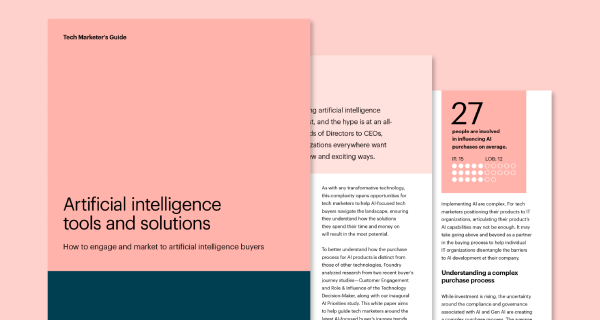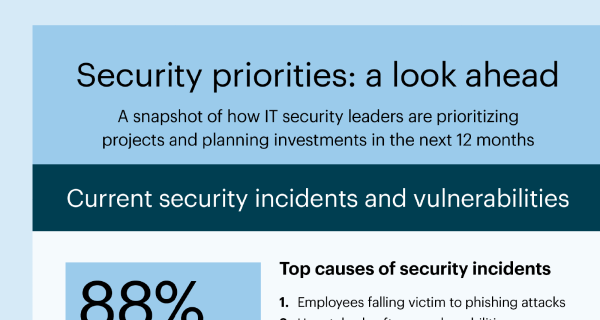Today is your lucky day! Why, you might ask? Well that’s because you don’t need to be the first to figure out the best practices for your ABM program! After launching hundreds of ABM programs over the years, we found a few things that work. This blog post is about the tried and tested ABM practices that work for tried and true ABM practitioners.
Account-based marketing (ABM) best practices
1. Unify sales and marketing goals
Sales and marketing alignment is a crucial part of all ABM programs. If you’re thinking about starting an ABM program, or improving your existing program, try meeting regularly to set shared goals and discuss benchmarks. This best practice for ABM programs opens up a valuable channel of communication that will keep both parties informed on any insights that sales or marketing can act upon.
Sales and marketing teams should prioritize referencing the same reporting, measuring the same KPIs, and have a clear workflow to optimize sales activation. Achieving this level of cohesiveness prevents buyers from receiving conflicting messaging that may confuse them. Furthermore, a clear workflow ensures quick informed responses from your team to its target accounts.
See How Aligning Marketing & Sales Helped SugarCRM Achieve $9.9M In Influenced Pipeline.
2. Identify your target accounts
If you’re new to ABM, creating your organization’s ideal customer profile is critical. Your ICP will guide you on which account to focus on, and help your team create content that will best speak to the pain points of your buyers. An ICP is a hypothetical description of a company or person that would benefit the most from your product or service. ICPs are defined by factors including their relative career stage, their familiarity with your service offerings, their pain points, account size, and their motivation. You can break your ICPs down further by creating buyer personas that will help determine what messaging you want to target specific accounts with.
Here’s an example of ICP buyer personas for a SaaS company:
- Tech Newbie
- Software veteran
- Revenue-oriented buyer
A tech newbie might need more top of funnel content to understand the upside of your product, while a software veteran might want more technical content on product performance and limitations. Lastly, the revenue-oriented buyer wants to know the bottom line, and see the ROI your product brings companies of similar stature.
Click here to learn more about creating an ICP.
3. Choose the right marketing channels
You’ve aligned your sales and marketing goals, and identified which accounts you want to target, now it’s time to choose the right messaging. As cliche as it sounds, the right messaging at the right time is a powerful rule of thumb.
Choosing the right marketing channels doesn’t need to be difficult. Keep in mind the cost, conversation rate, and your audience size when choosing the best channel. Display ads provide good coverage to a large number of accounts, and are cost efficient. However, display ads lack a high conversion rate hovering around a 0.29%-0.59% CVR and serve best as a supplemental measure to other channels. Emails have higher engagement and visitors coming from email are the most likely to convert on forms compared to other channels. While social media, either paid or organic, is another cost efficient channel to target specific audiences, but has a higher than average bounce rate.
When choosing which channels to utilize, consider all of the above factors to find the channel mix that works best for your product offering.
Once you’ve defined your ideal customer profile, the work doesn’t stop there…
Each ideal customer is an account, and each account is made of many stakeholders that have a say in whether they end up doing business with you. So, now what? Now you can take your defined ideal customer profile, and dig into the buyer personas that play into each ideal customer. For each contract you close, you probably had at least one stakeholder who served as a buyer champion. To effectively market to not just whole accounts, but individual prospects, you should define a few buyer personas. Buyer personas are essentially the same sort of exercise as defining ideal customer profiles, but on a personal level. Much like ideal customer profiles, personas should define a hypothetical prospects’ title, experience, motivations, and pain points.
Once you’ve done the hard work of defining your ideal accounts and buyers within those accounts, you can focus on getting your marketing messaging in front of them. By identifying ideal customer profile and your buyer personas, you can be more confident that your messaging will resonate based on their high level of fit with your product.
4. personalize your buyers’ experience
Once you have your accounts identified, segmented, and the marketing channels you want to focus on, sales and marketing can work together on personalizing the buying experience. Content can be curated to have a 1:1 touch even when a campaign is targeting a large number of accounts. With the personalization features of an ABM platform, and messaging that speaks to the buyers’ current status, marketers can expect shorter sales cycles.
Some common personalized marketing channels include:
- 1:1 landing pages
- Outbound Emails
- Website Messaging
- Display Ads
At Foundry we found personalized web experiences are:
- 20% more likely to convert
- 50% more likely to visit your site again
- 150% more engaged
Advice from real account-based marketing practitioners
Don’t start and end with ads.
Account-based ads are fundamental to ABM strategy, but too many ABM newbies stop there. Make sure to dedicate effort to personalization and sales activation to capture accounts once they’ve been reached and engaged with account-based advertising.
“The biggest challenge I see people face with ABM programs is when there’s no buy-in from the sales team or the marketing team is getting lost in ads and forgetting the other channels and tools critical to ABM program success.”
– Jamal Henderson
ABM AMA: What’s the biggest challenge you see people face with ABM programs?
Think not just about the accounts, but the specific roles you want to target as well.
Once you’ve determined what accounts are the highest value for your business, you need to then determine what roles within those accounts you need to target. On average buying groups now consist of a whopping number of stakeholders, but that doesn’t mean you want to target everyone from the intern to the CEO. Analyze your existing customer base to determine the best roles to target.
“ABM has come a long way from the early days of just praying that you’re serving the right messages to the right accounts. Now, it’s about pinpointing the right titles within a global organization and serving them such compelling offers that they have to check out your products and business.”
– Steven Tsao,
Crafting the ABM Program of the Future
Educate your internal stakeholders about ABM in their language.
A successful ABM program requires buy-in from the marketing team, sales leadership, and the C-suite as a whole. It’s important to teach your internal stakeholders about ABM, tying it back to the metrics that matter for their bottom line.
“When we have to make the case for ABM to our organization, the single most important thing to remember is to talk in the same language that the rest of the business is.”
– Jessica Garrett,
Drive revenue with customer expansion campaigns.
Don’t forget the Pareto principle, 80% of a company’s sales should come from 20% of its customers. ABM programs should focus efforts on customer expansion by building trust and value with their customers.
“Start with customer expansion campaigns. It removes some of the challenges that new logo campaigns have (e.g. lack of account insights, trouble mapping the account) and so lets marketing and sales teams focus on collaborative campaign design and probably benefit from shorter sales cycles.“
– Andrew Mahr,
ABM AMA: What’s the biggest challenge you see people face with ABM programs?
Display ads are a means to an end, not an end in itself.
For better engagement, ABM programs should focus on multiple pieces of personalized content. Display ads are complementary, and serve as just a foot in the door to reaching your target accounts.
“Display is an amplifying tactic. If you aren’t doing other things to break into the accounts you are targeting, then the display ads will have little meaningful impact. You should think of display as an opportunity to get your message into the market and in front of the right people.”
– David Nicotra,
ABM AMA: What’s the biggest challenge you see people face with ABM programs?
ABM is a holistic approach to marketing.
Utilizing all of your resources and fostering strong inter-organizational alignment helps an ABM program’s success. Your ABM program will see the benefits of sales and marketing being on the same page, checking the same metrics, and working towards the same goals.
“ABM is a long game. It’s an entire motion that is orchestrated end-to-end that’s focused on the customer. It includes sales, strategy, research, devs and marketing working together.”
– Wendy Gaskill,
You can’t have best-in-class ABM without personalization.
Personalization should be a shared goal between sales and marketing to deliver prospects a consistent experience during the purchase journey.
“I think the companies that have been the most successful, truly best-in-class ABM are finding ways to look at the big picture. Is the experience that being delivered with web personalization consistent with what your prospect is seeing in account-based ads? All of the channels need to be a holistic integrated experience to deliver on what we think ABM is all about”
– Bob Peterson,
Ask an ABM Expert: Why is website personalization so important to ABM?
Sales and marketing should agree on what success looks like.
When sales and marketing are at their best, they’re working together and measuring the same KPIs.
“The most important thing about ABM metrics is that sales and marketing need to be tied to the same KPIs — not fighting different battles with different definitions of success. When it comes to picking that metric, there are two I think work best — opportunity rate in target accounts & revenue per target account.”
– Andrew Mahr,
ABM AMA: What is the most important metric of a successful ABM program?
Conclusion
If you’re new to ABM or looking to jumpstart your program, give these tried and true best practices a shot. Marketing and sales teams no longer need to take shots in the dark, instead your ABM program can give the buyers you want, what they want, when they need it.
Want to discuss more ABM best practices? Talk to one of our experts






